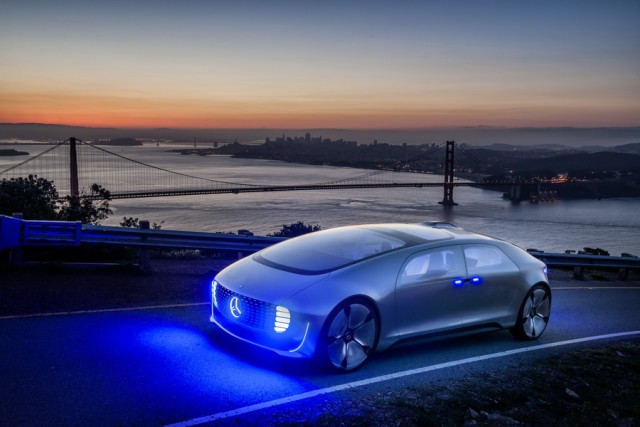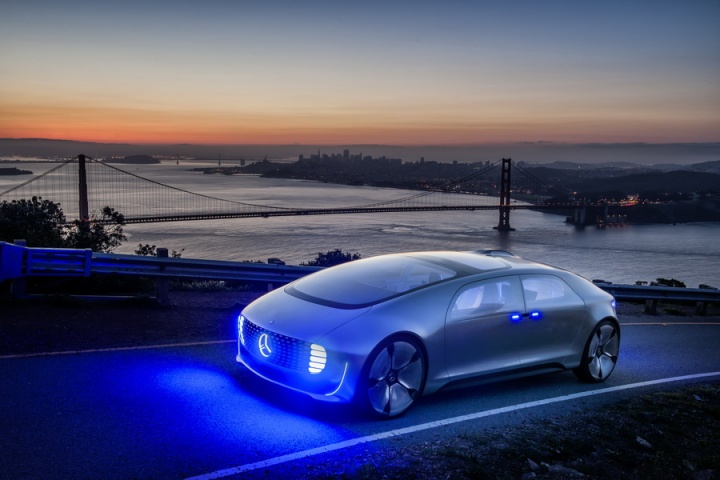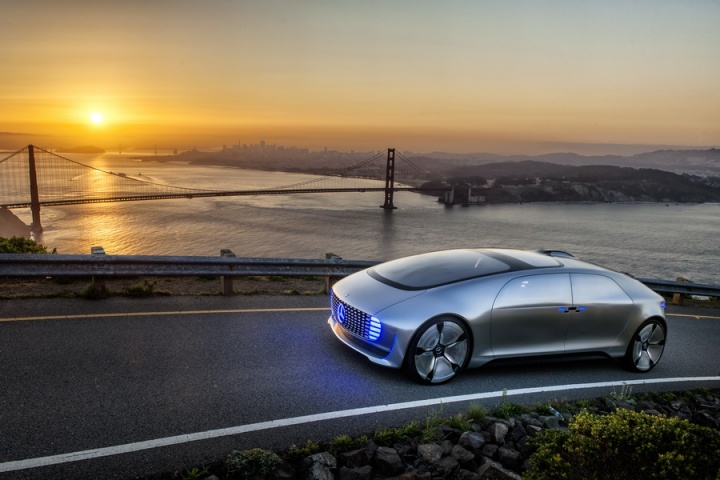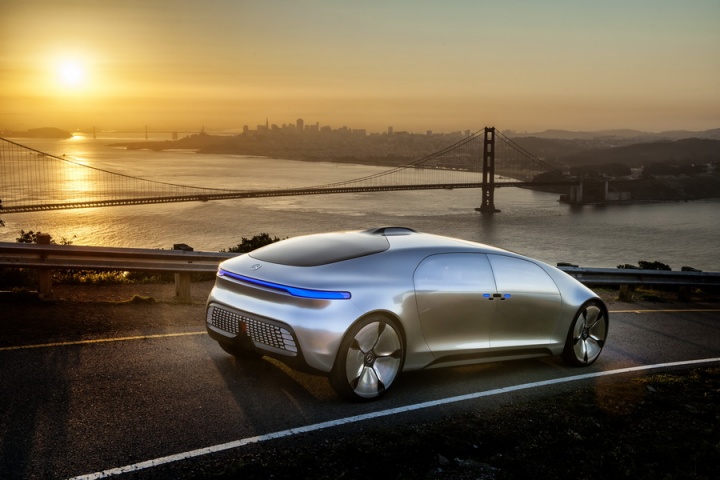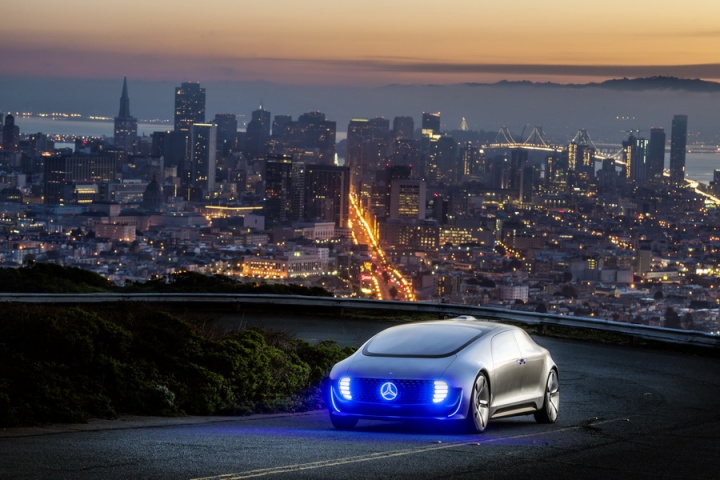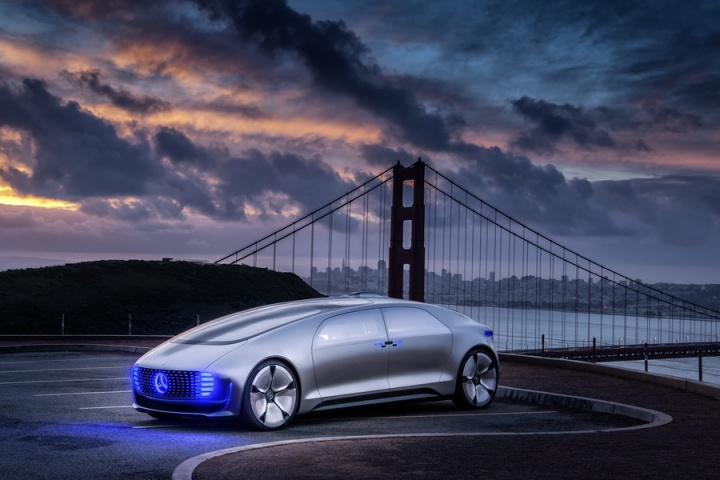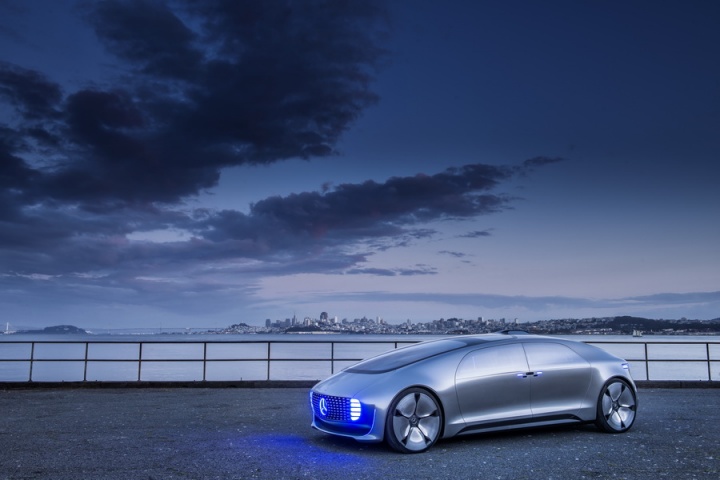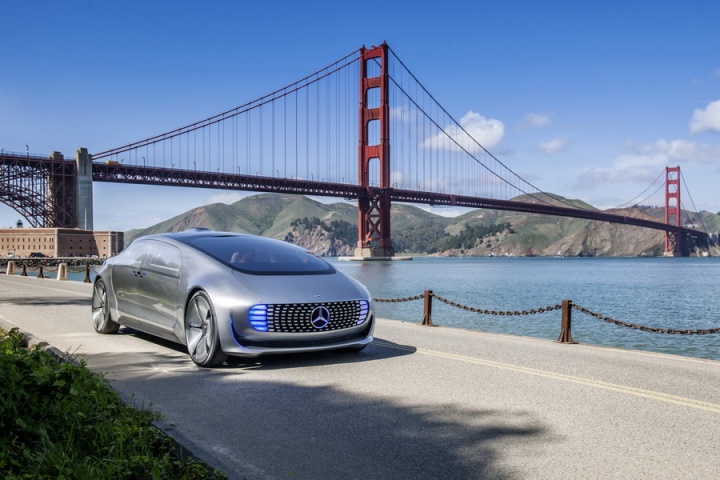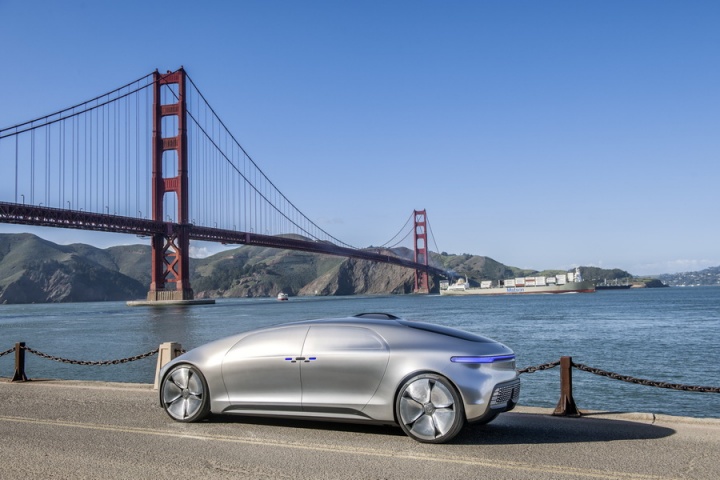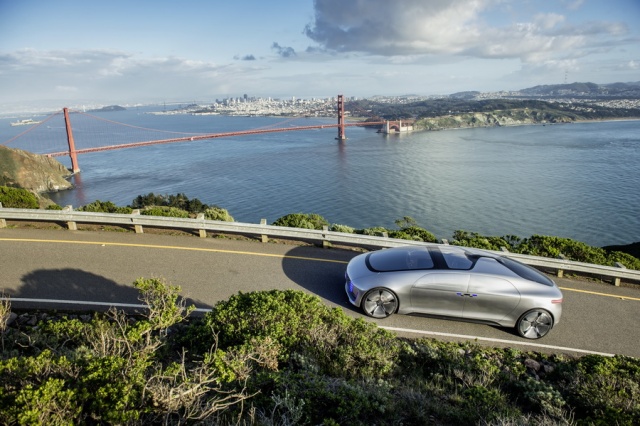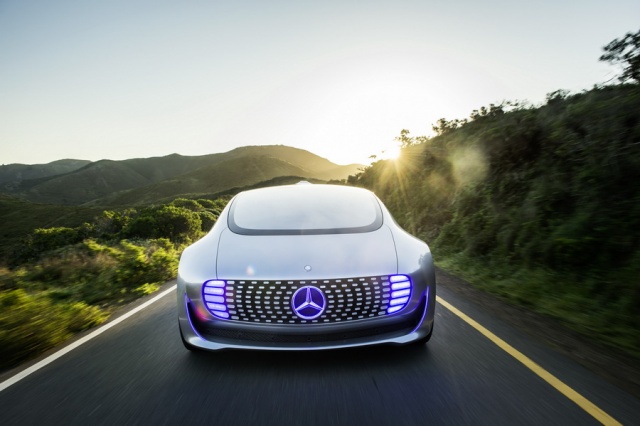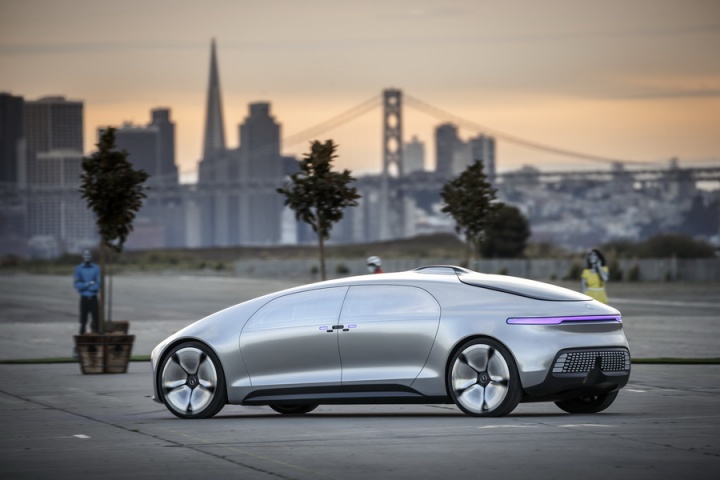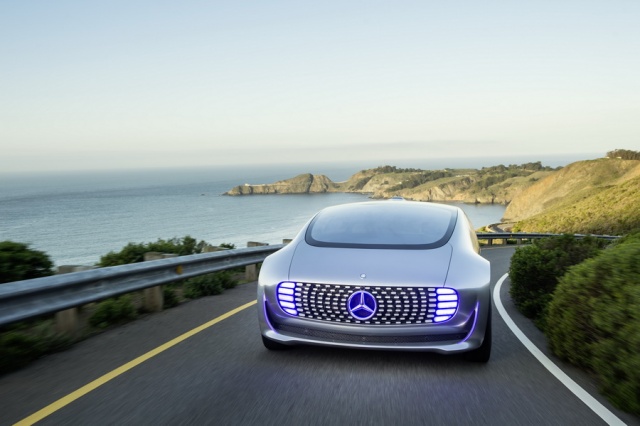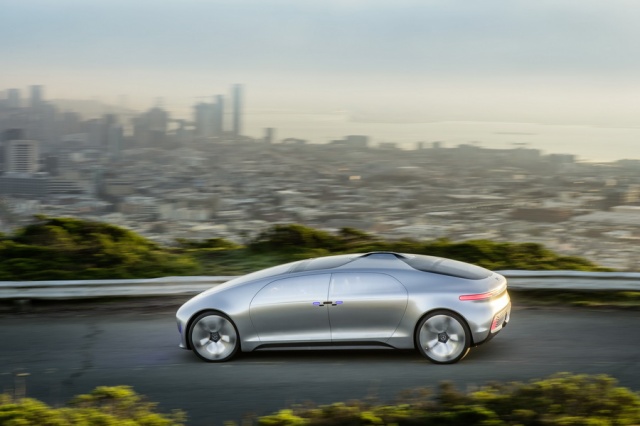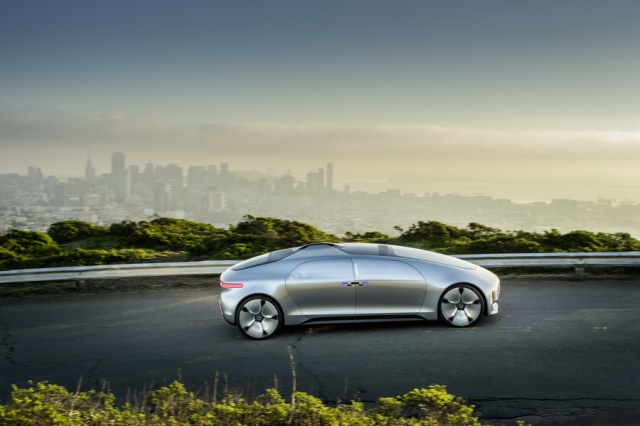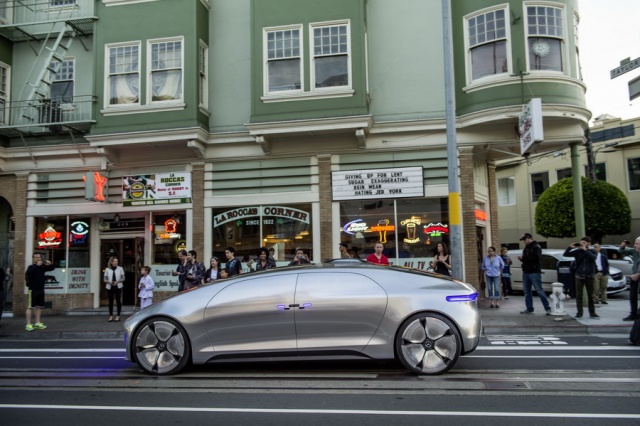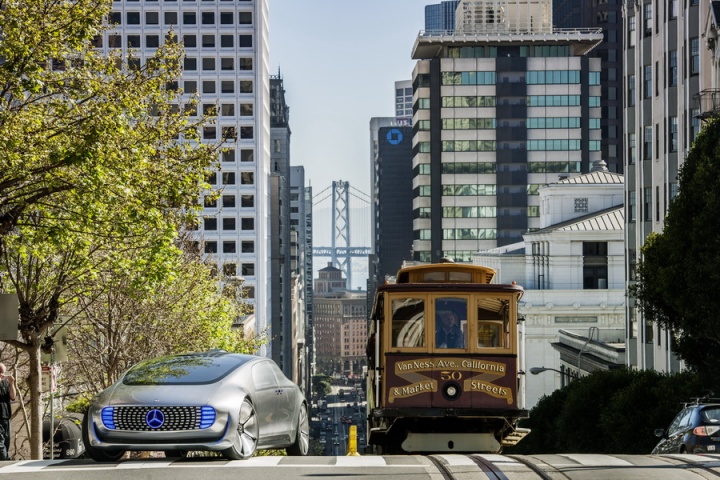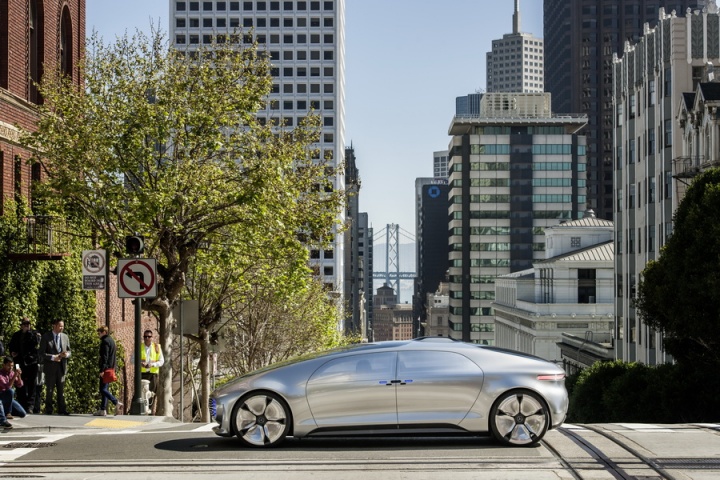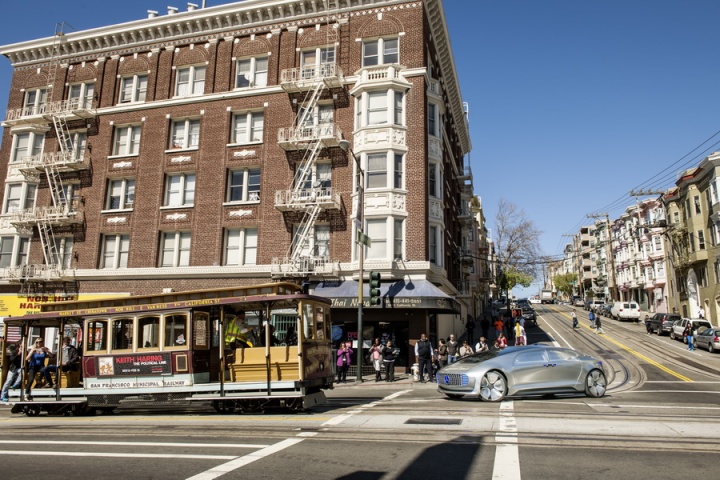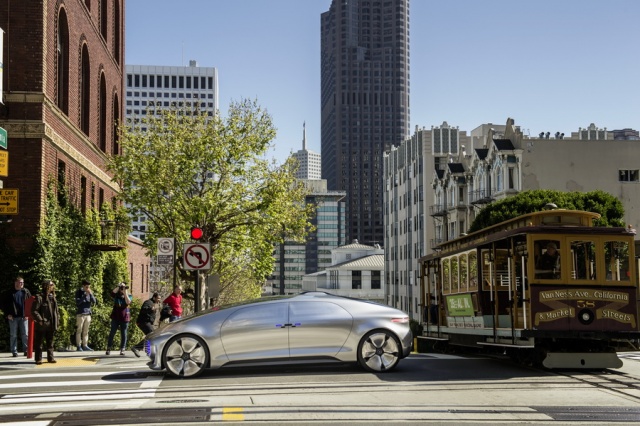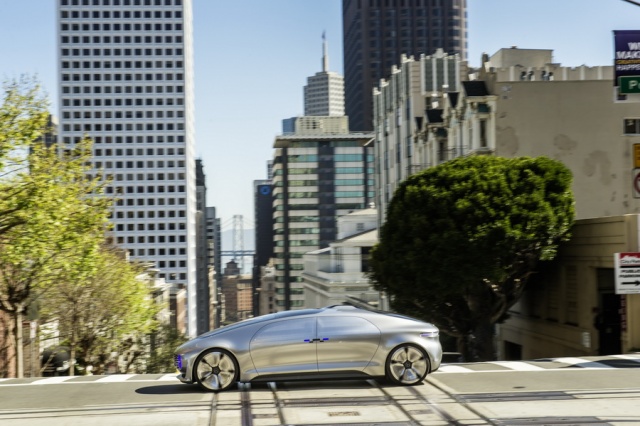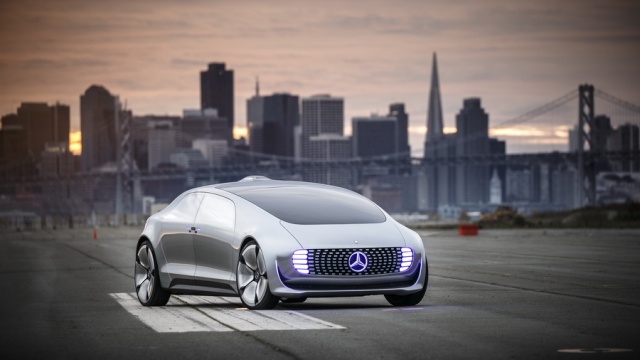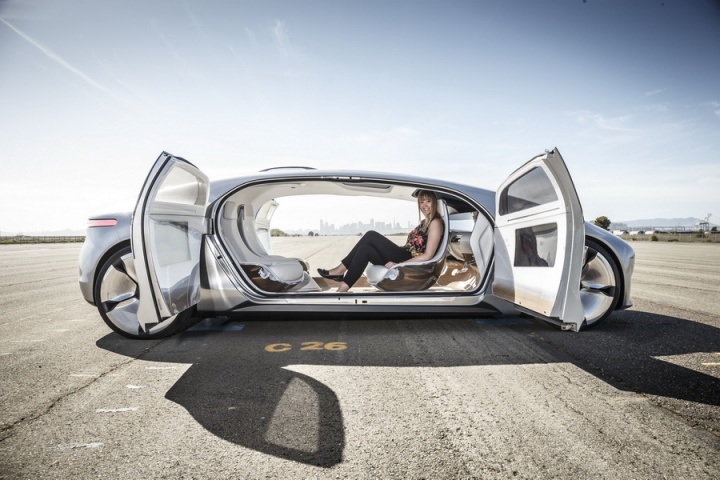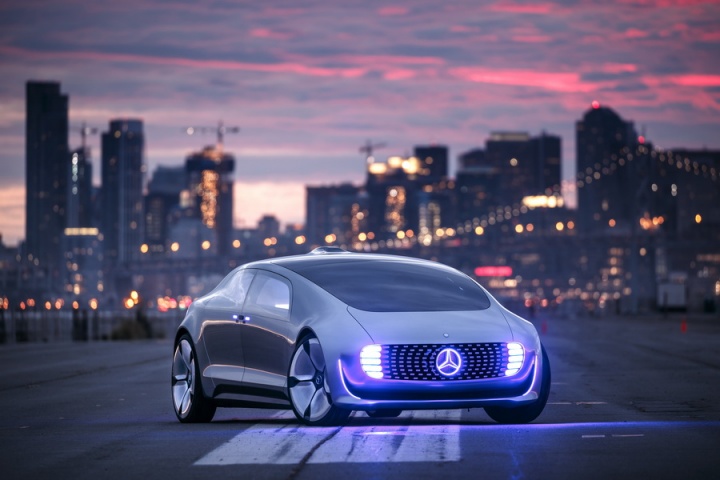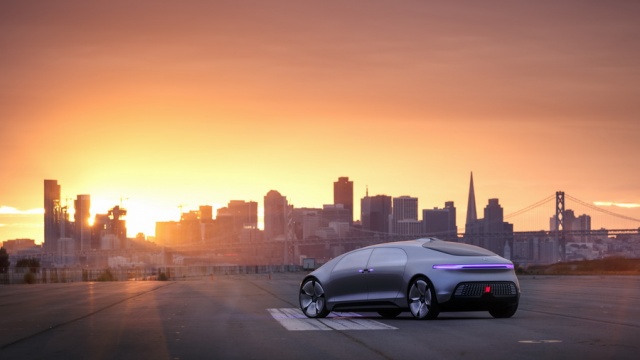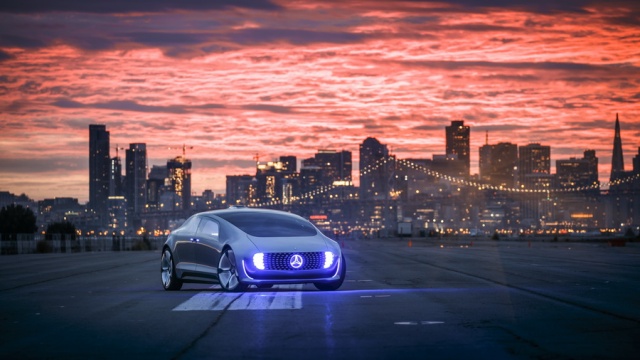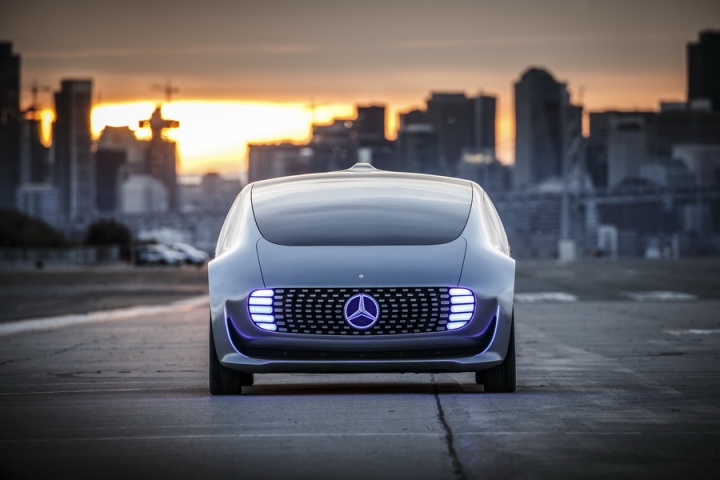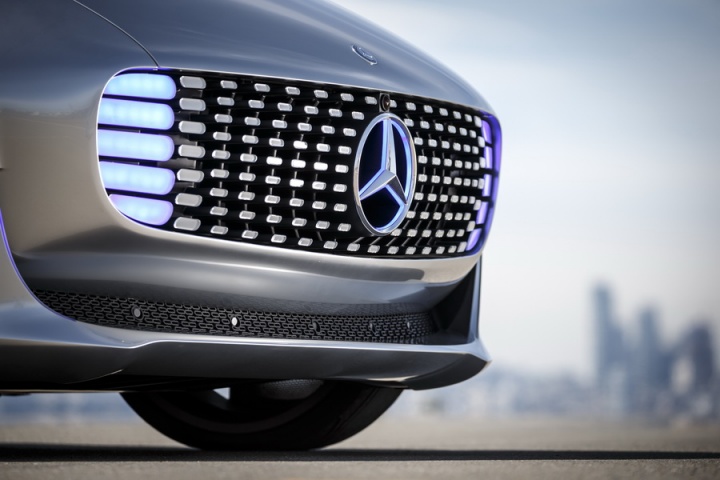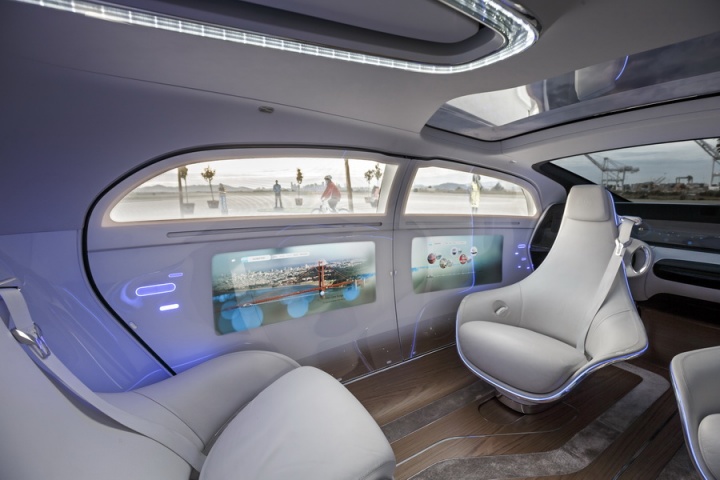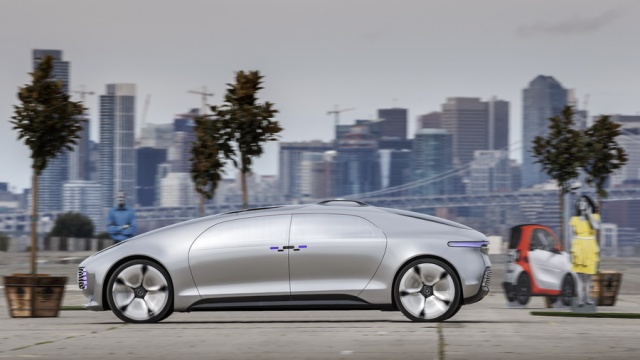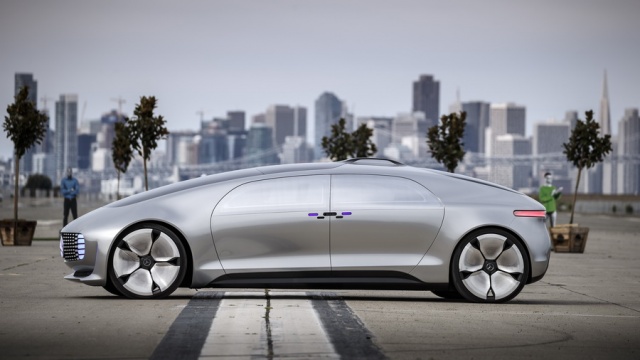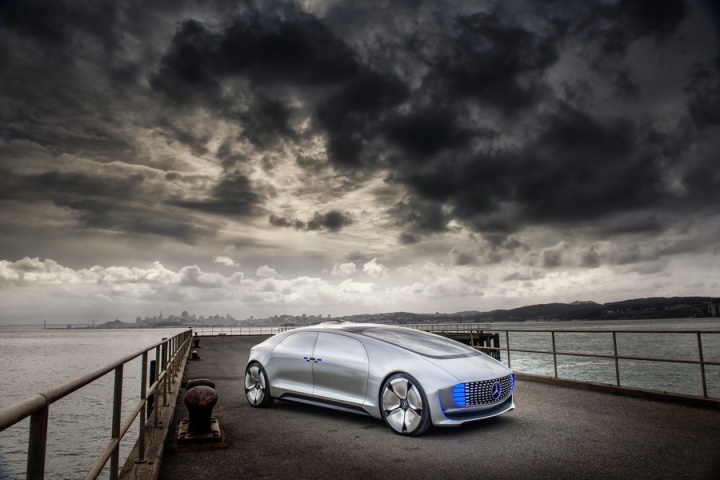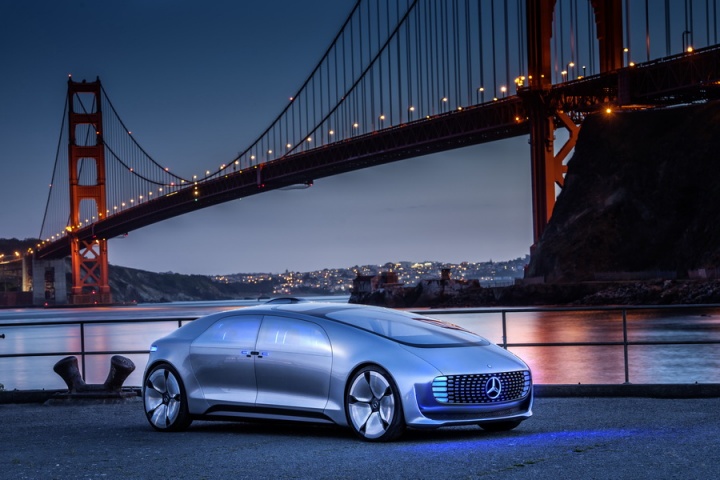You may be surprised to learn that the most important aspect of the Mercedes-Benz F 015 autonomous concept is not the fact that it can drive itself, but how it interacts with other road users - most notably pedestrians.
It's the start of a new way of looking at driverless cars. A day spent with the 'Luxury in Motion' concept and its creators, culminating in an automated passenger ride, revealed the incredible depth Mercedes has gone to in producing this very special one-off vehicle.
In the Metal
I'll admit to not thinking much of the exterior of the F 015 concept when I saw the first images of it, but having spoken to its designers about how the design evolved and spent a considerable amount of time in the presence of the car, I now have an appreciation for it. Though I still wouldn't call it beautiful. What it is, is huge. Those massive 26-inch wheels disguise the Maybach-esque proportions, as does the haunches that gives the rear some presence. They also prevent it from being a full-on mono-box shape, aided by the sloping window line and pronounced GPS receiver housing in the roof. Apparently, the front grille caused some controversy at Mercedes, as the bosses suggested that a range-topping concept should have the same grille design as the S-Class. But the designers seemingly won the argument by saying that this is a vision of a car for at least 15 years from now and nobody knows what the Mercedes grille will look like then.
The concept's appears quite simple at first, minimal even, but it holds a key part of this car's philosophy, in that its multi-LED design can interact with the world around it, glowing different colours depending on whether it's in autonomous or manual modes for a start, but also revealing how hard it is braking. We'll touch on its laser projection capabilities under Worth Noting below as it's an important aspect of the car.
If you think the monolithic exterior is a bit wacky, wait until you experience the cabin. It has been designed around the idea of a four-person lounge and though it's connected to the world via the latest cloud-based services, the Mercedes designers wanted the passengers to socialise with each other, not just those online. Given the exterior dimensions of the concept, the cabin isn't all that spacious, but it feels airy and quite unlike any normal car's interior. The specially made seats look great and encourage their occupants to lounge back and relax, but we were too busy playing with the controls to do that.
You see, Mercedes has gone to the bother to develop working prototypes of various parts of the F 015's infotainment system that could easily have remained science fiction. The first features large touch screens integrated into each of the four doors. When unused, they display a series of fluid dots and objects that represent real things in the world outside, though their movement is more like that of a lava lamp. It works. The touch screens themselves in the concept are a little clunky, but they are functional and some neat ideas are on show, including full 360-degree images spanning the circumference of the cabin. These can even be swiped and moved by any passenger. Likewise, music, contacts, videos and more are easily accessible. On top of that, passengers can look along the route they're on for friends or places of particular interest, while the car's settings can be altered by anyone - once the 'driver' gives them permission.
We also got to play with the concept's gesture recognition interface, designed for the occupants of the front two seats facing forward. Simply place your hand in the air near the middle of the dashboard and the full-width map can be zoomed in or out by virtually 'pushing' it away or 'pulling' it back to you. This system also tracks your eye movements, so, glance at the volume setting and it lights up, then move your hand to the right to turn up the stereo, or to the left to turn it down. Now glance at the route information screen and options such as stopping for a coffee pop up and again it's selected by a simple hand movement. This system is very much in its infancy, but it shows a lot of promise.
Driving it
Technically, we didn't drive the concept, though it can be driven and the engineer that accompanied us on the ride says he reached over 100km/h on the runway on his own in the car. Instead, we were driven. The car was summoned to us using a bespoke smartphone app, in which the number of passengers can be input, so the car pulls up at the right spot and opens the right doors. It's a small bit eerie. Once the doors are closed, we swivel all four seats so we face each other and the tiny steering wheel is ignored. At the press of a button the car is off on a pre-set route up and down the runway, in and out of cardboard cut-out pedestrians etc.
Not that it's largely relevant to the experience, but the ride is on the firm side, which is hardly surprising given that the concept runs on 26-inch alloys and ultra-low profile tyres. It's noisy too, in terms of cooling fans, though the stereo has enough oomph to drown that out. The view out isn't expansive, thanks to the combination of the shallow glass and the pattern over it, but there's so much to see inside that we hardly noticed all that. In terms of pace, the car seemed to keep to a sensible 60km/h or so until we tweaked the settings using the touchscreen more to the 'Dynamic' side and it picked up speed and followed its course with more zeal. The instant torque of the electric motors was obvious from that point of view.
What you get for your Money
Mercedes-Benz hasn't admitted how much the F 015 project has cost, but somewhere north of €50 million is a good guess. No doubt some of that is shared with other, closer-to-production autonomous technology, but even so, it reveals that this is much more than just an attention-grabbing concept car to take up space at a motor show.
Worth Noting
Mercedes-Benz readily admits that the concept car we were driven in has not, in fact, got full autonomous ability. It can follow a pre-programmed route, but instead of trying to pack in all the necessary sensors and camera systems, Mercedes wanted instead to showcase its thinking on the whole idea of autonomous driving and one aspect of that stood out for me. It's the concept of eye contact between a driver and a pedestrian or cyclist. Until now, no other car maker developing driverless cars has considered how important it is for there to be two-way communication between the driver and pedestrian for complete safety and comfort.
The LED grille at the front of the car plays its part as mentioned above. Take the situation where a pedestrian is waiting to cross the road. They look one way and see the F 015 approaching and the blue headlights reveal that it's in autonomous mode. The car detects the person and starts braking. This is shown up on the grille as a pulse from the bottom to the top and as the car nears it projects a clear image onto the road indicating exactly where it will stop. Then, a moving pedestrian walkway is projected in front of the car and it even politely prompts the pedestrian to "please go ahead". Not all real drivers are this obvious with their intentions. But perhaps the pedestrian never intended to cross; they could be standing by the side for another reason. They would wave on a regular driver, so the F 015 can interpret the same gesture and says "thank you" before continuing on its way, again projecting an arrow ahead of it to make it obvious what its intentions are. Through all of this, there is an extra display on the rear of the car telling the traffic behind what is happening and even giving a graphic representation of the pedestrian crossing the road in front. Mercedes-Benz has developed an already advanced philosophy for the F 015 concept and while it seems simple, it's remarkably effective and leaves us thinking that perhaps driverless cars really will happen one day after all.
Summary
Completely driverless cars are not five years away; they're probably not even 20 years away, but they're in development and having experienced first-hand how much thought is going into their creation, we feel confident that Mercedes-Benz will eventually deliver on its promise of autonomous vehicles that are safer than human drivers. The F 015 is a mere glimpse at the thought process, and a fascinating one at that.

